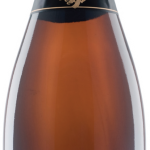BODEGAS MURVIEDRO
DO UTIEL-REQUENA & DO CAVA!
If, following this article, you visit the Bodegas Murviedro website (www.murviedro.es) you’ll need a large screen! The number of wines that this Valencian bodega makes is breathtaking. Essentially, Bodegas Murviedro caters for everyone: wine aficionados will be delighted with their top range of fine wines; as will youngsters, perhaps coming to wine for the first time; and everybody between! If it’s a one-stop wine shop you’re looking for, this could well be it!
My contact not only sent me a couple of examples of their top 100% Bobal wines (for The-Great-Bobal-Taste-Off article, soon to appear in Cork Talk), he also included a number of other wines representative of the differing styles and different consumer ‘targets’. It’s been a delight tasting them and appreciating the the fact that these wines do exactly what it says on the bottle!
Corolilla Chardonnay Brut is one of those cavas that makes you wonder, why bother with Non Vintage Champagne? Made with the traditional French variety, Chardonnay, whose  old, low yielding vines grow at altitude in the chalky soils of one of their oldest vineyards, this wine has the elegance of French Fizz but with a perhaps ‘warmer’ feel to it.
old, low yielding vines grow at altitude in the chalky soils of one of their oldest vineyards, this wine has the elegance of French Fizz but with a perhaps ‘warmer’ feel to it.
Approaching the upper limits of the grams/litre ceiling for Brut sparkling wines, there’s a richness underlying the fresh acidity making the wine suitable for aperitifs and with food. Twelve months on its lees have added an endearing slight creaminess to the wine and the old vines bring extra depth too.
The attractively labelled, Luna de Murviedro Brut, is a traditional Spanish mono-varietal cava whose Macabeo grapes have clearly enjoyed maturing in the sunshine of the South East of the country. Look in the bars and restaurants of the costas and you’ll see this wine everywhere. There’s a slight fresh green apple note to the usual patisserie aromas and flavours with a refreshing acidity that shouts ‘celebration’!
It’s had a couple of months longer than the minimum nine on it’s lees following the second fermentation which give it that little extra depth. It’s another example of Bodegas Murviedro’s value for money philosophy.
I have a sneaky feeling that the slightly sparkling, screw-topped Estrella de Murviedro Frizzante would be a good pairing with Thai food and was delighted to be proved correct. This off-dry style of wine has a certain residual sweetness which complements that in some styles of Thai, and Indonesian, cuisine but sufficient freshness to add a touch of acidity so that the combination isn’t at all cloying.
Clearly this wine is also meant for those with a slightly sweeter tooth and no doubt the younger generation. Made with Moscatel de Alejandria, it’s an easy access wine in terms of the easy to open closure, but also because it delivers a quick mouthful of florally scented grape and raison tasting pleasure.
Alma Mistica from the ‘cool’ DNA Murviedro range is a still wine also made from Moscatel but this time in a dry style. It has that typical white flowers and raison/grape aroma which might make you expect a slightly sweet hit on the mouth and finish. But no, the winemaker’s intention here is to create an attractively perfumed white wine but one with the acidity and grip of a dry wine to be enjoyed as an aperitif but also with fish dishes – try it with simply grilled lenguado!
There are two Bodegas Murviedro wines about which I’ve yet to comment – the two submitted for The Great Bobal Taste Off. I’m saying nothing more yet about these two wines, one a Crianza and the other a Reserva, than to mention that they certainly maintained the very high standard of all the fine wines I’ve tasted made from the fascinating indigenous variety, Bobal. Watch this space!
In truth of course, I have only scratched the surface of the huge variety of wines produced by this traditional, yet very modern thinking winery but I hope I’ve given you the confidence to do some experimenting yourself, you’ll not be disappointed!
Contact Colin: colin@colinharknessonwine.com and though his unique wine services website www.colinharknessonwine.com and you can follow Colin on Twitter for all the latest news from the Spanish wine world @colinonwine .

